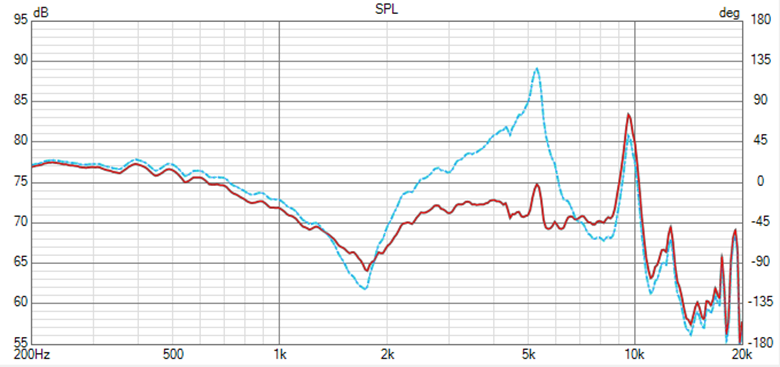Hey,
I am working on a 3-way active speaker design. Below are my drivers, amps, and power supplies. I also included a rough drawing of my design. I am hoping to get feedback on the legitimacy of my design and see if anyone has any advice or input that I may not have considered. Once I get some feedback here, I am going to come up with a more fleshed out version of the electronics diagram and ask for some feedback there.
Also, is it common to have a separate power supply for the subwoofer? They consistently seem to take up way more power and I could not find a power supply that was within my range that would work for all 3 in combination with some buck/boost converters. Not sure if that is bad practice.
Lastly, since I am investing so much into the power supply for the subwoofer, I would be interested in getting a nicer subwoofer if it is wroth it. Based off of frequency curves, I could find another that is a bit flatter, but I am not sure how much it is worth it at this scale.
Drivers:
Subwoofer: GRS 10SW-4 10" Poly Cone Subwoofer 4 Ohm
Midrange: Dayton Audio DC130BS-4 5-1/4" Classic Shielded Woofer 4 Ohm
Tweeter: Dayton Audio ND25FW-4 1" Soft Dome Neodymium Tweeter with Waveguide 4 Ohm
Amps:
Mid/tweeter: Dayton Audio KABM-30M 1 x 30W Bluetooth 5.0 Amp Board with EQ Programing Port
Subwoofer (built in power supply): ICEPower 300AS1 Class D Amplifier Module with Built-In Power Supply 1 x 300W
Power Supply:
Mid/tweeter: Mean Well RSP-150-15
Diagram:

If I am missing any relevant information, let me know.
Thank you.
I am working on a 3-way active speaker design. Below are my drivers, amps, and power supplies. I also included a rough drawing of my design. I am hoping to get feedback on the legitimacy of my design and see if anyone has any advice or input that I may not have considered. Once I get some feedback here, I am going to come up with a more fleshed out version of the electronics diagram and ask for some feedback there.
Also, is it common to have a separate power supply for the subwoofer? They consistently seem to take up way more power and I could not find a power supply that was within my range that would work for all 3 in combination with some buck/boost converters. Not sure if that is bad practice.
Lastly, since I am investing so much into the power supply for the subwoofer, I would be interested in getting a nicer subwoofer if it is wroth it. Based off of frequency curves, I could find another that is a bit flatter, but I am not sure how much it is worth it at this scale.
Drivers:
Subwoofer: GRS 10SW-4 10" Poly Cone Subwoofer 4 Ohm
Midrange: Dayton Audio DC130BS-4 5-1/4" Classic Shielded Woofer 4 Ohm
Tweeter: Dayton Audio ND25FW-4 1" Soft Dome Neodymium Tweeter with Waveguide 4 Ohm
Amps:
Mid/tweeter: Dayton Audio KABM-30M 1 x 30W Bluetooth 5.0 Amp Board with EQ Programing Port
Subwoofer (built in power supply): ICEPower 300AS1 Class D Amplifier Module with Built-In Power Supply 1 x 300W
Power Supply:
Mid/tweeter: Mean Well RSP-150-15
Diagram:
If I am missing any relevant information, let me know.
Thank you.

.jpg)

